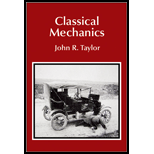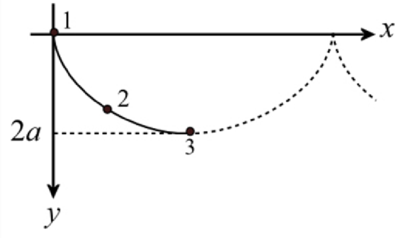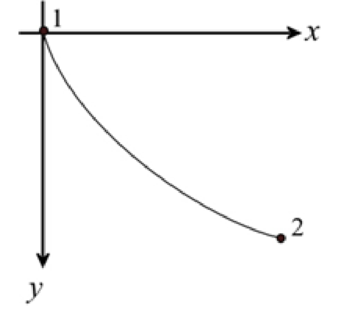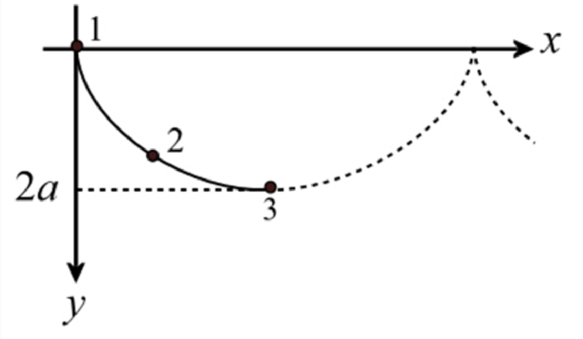
The path of minimum time to fix the point.
Answer to Problem 6.15P
The path, here, the point 3 is the lowest point on the curve for the path of the roller coaster car.

Explanation of Solution

Figure1
The curve for the path of the roller coaster car between the point 1 and 2
Assume that the car is launched at any height
At point1
Initial kinetic energy of the car is,
Here,
Initial potential energy of the car is,
Here,
The total initial mechanical energy of the car is the sum of the initial kinetic energy of the car and the initial potential energy of the car. That is
Substitute
At any point between 1 and 2, consider the car is moving with a velocity of
According to the law of conservation of energy, the total initial mechanical energy of the car is equal to the total final mechanical energy of the car so,
The expression for unknown path is
The differential form of the variable
Substitute the equation
The expression for the time taken to reach the car from 1 to 2 is,
Substitute
Compare this equation with standard form of Euler-Lagrange equation
Write the Euler-Lagrange equation,
Calculate the value of
Thus, the Euler-Lagrange equation becomes as,
Substitute
But the car raises the height from
Substitute
Take the constant as
Square the equation
Conclusion:
Let
Thus, re-write the equation for
I
Integrate the above expression (V) by substituting ,
Assume that the initial point represent the origin of the path of the car, that is
Substitute
From the properties of the cosine function, the value of the cosine function is equal to 1 for
Substitute
Thus, the expression
Therefore, the final parametric equation for the path of the car is

Here, the point 3 is the lowest point on the curve for the path of the roller coaster car.
Want to see more full solutions like this?
Chapter 6 Solutions
Classical Mechanics
 College PhysicsPhysicsISBN:9781305952300Author:Raymond A. Serway, Chris VuillePublisher:Cengage Learning
College PhysicsPhysicsISBN:9781305952300Author:Raymond A. Serway, Chris VuillePublisher:Cengage Learning University Physics (14th Edition)PhysicsISBN:9780133969290Author:Hugh D. Young, Roger A. FreedmanPublisher:PEARSON
University Physics (14th Edition)PhysicsISBN:9780133969290Author:Hugh D. Young, Roger A. FreedmanPublisher:PEARSON Introduction To Quantum MechanicsPhysicsISBN:9781107189638Author:Griffiths, David J., Schroeter, Darrell F.Publisher:Cambridge University Press
Introduction To Quantum MechanicsPhysicsISBN:9781107189638Author:Griffiths, David J., Schroeter, Darrell F.Publisher:Cambridge University Press Physics for Scientists and EngineersPhysicsISBN:9781337553278Author:Raymond A. Serway, John W. JewettPublisher:Cengage Learning
Physics for Scientists and EngineersPhysicsISBN:9781337553278Author:Raymond A. Serway, John W. JewettPublisher:Cengage Learning Lecture- Tutorials for Introductory AstronomyPhysicsISBN:9780321820464Author:Edward E. Prather, Tim P. Slater, Jeff P. Adams, Gina BrissendenPublisher:Addison-Wesley
Lecture- Tutorials for Introductory AstronomyPhysicsISBN:9780321820464Author:Edward E. Prather, Tim P. Slater, Jeff P. Adams, Gina BrissendenPublisher:Addison-Wesley College Physics: A Strategic Approach (4th Editio...PhysicsISBN:9780134609034Author:Randall D. Knight (Professor Emeritus), Brian Jones, Stuart FieldPublisher:PEARSON
College Physics: A Strategic Approach (4th Editio...PhysicsISBN:9780134609034Author:Randall D. Knight (Professor Emeritus), Brian Jones, Stuart FieldPublisher:PEARSON





